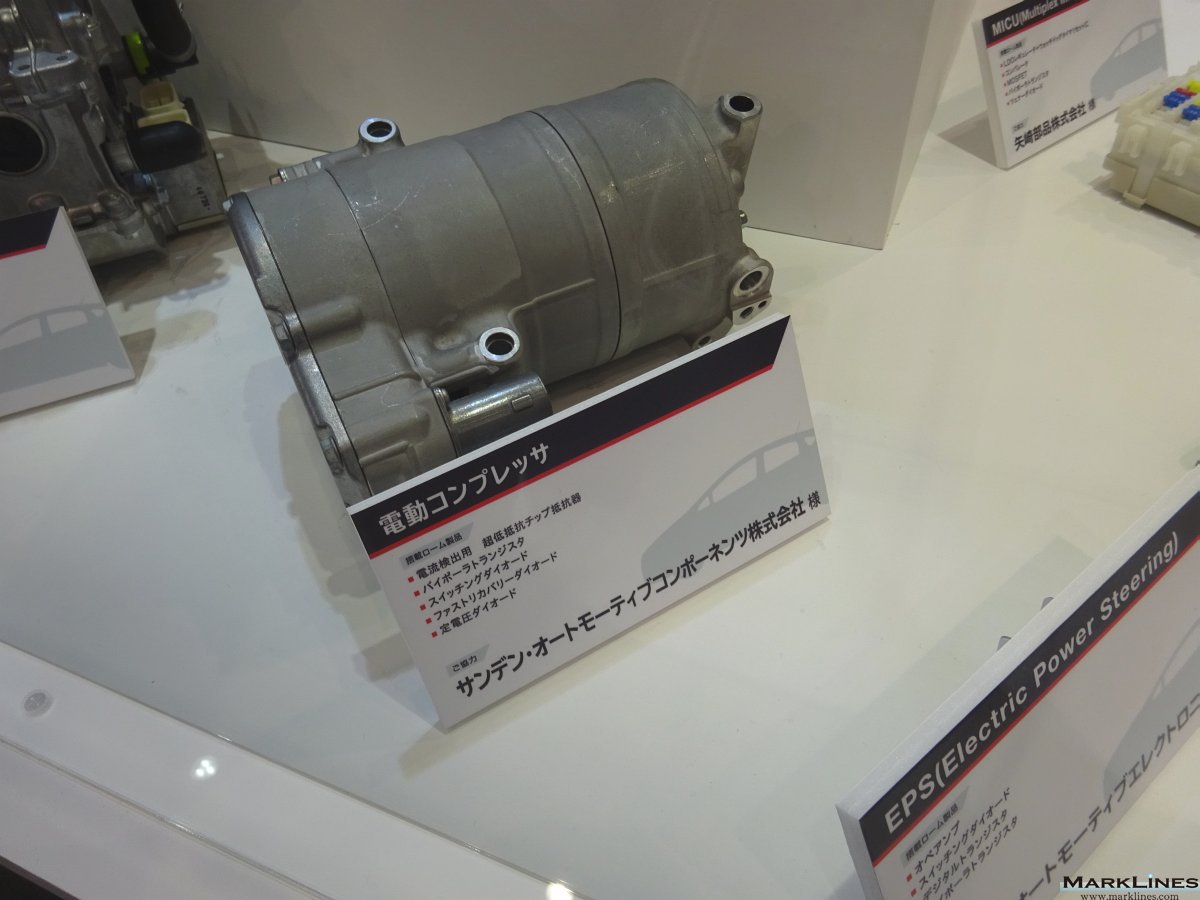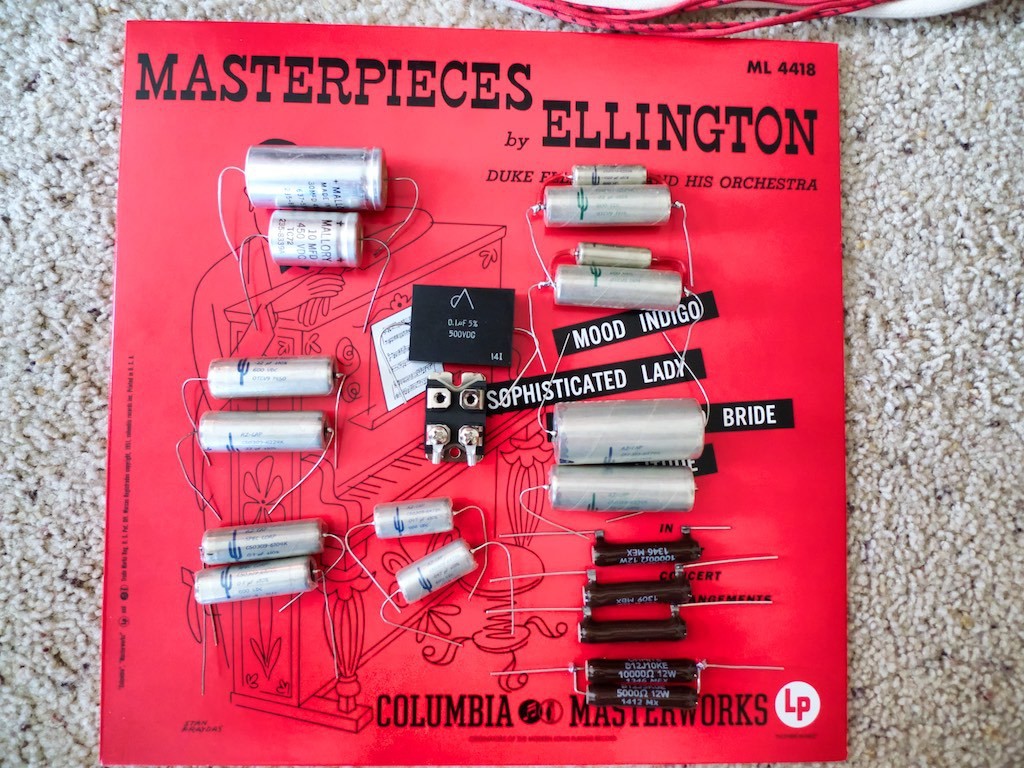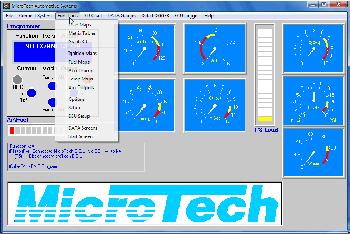Summary :
OSBSP is one the key and critical domain in infotainment unit, using QNX as an operating system, BSP and other required drivers are coming from QNX. OSBSP contains modules such as Quick RVC, SRVC ( Surround Rear View Camera) Resource manager, Core BSP- board support package, startup, serial driver ( USB, UART, I2C, SPI) Storage and file. Experience Beckman Coulter January 2006 - Present Valueline Properties, LLC 2005 - Present Kaiser Permanente 2005 - 2006 Systron Donner 2003 - 2004 ARRIS 2000 - 2002 Yazaki North America 1997 - 2000 Stoneridge Electronics 1992 - 1996 Baxter Healthcare 1988 - 1992 Baxter Healthcare 1985 - 1988 American Hospital Supply Corporation 1982 - 1985 Skills Medical Devices, Electronics, Biotechnology.
USB composite device driver error often occurs when you try connecting an old printer to a USB 3.0 port. If you are still struggling to fix it, you can read this post of MiniTool to get 4 effective troubleshooting methods.
Quick Navigation :
USB 3.0 breaks data transfer limitations. However, USB 3.0 hub sometimes will not compatible with your old devices. For example, the PlayStation Classic hack requires you to use a USB 2.0 drive.
- Download the free AirMedia 2.0 enterprise PC application for Windows or Mac OS® below. You can use it to silently deploy the AirMedia 2.0 app to personal computers across the enterprise. This ensures that everyone in your organization is ready and able to connect to any approved AirMedia 2.0 device with just a single mouse click.
- The driver will identify in device manager as 'USB Audio Class 2 Device.' This name will be overwritten with a USB Product string, if it is available. The driver is automatically enabled when a compatible device is attached to the system.
- Write an.inf file that installs Winusb.sys as the function driver for the USB device. Create a signed catalog file for the package. This file is required to install WinUSB on x64 versions of Windows. Attach the USB device to your computer.
If you want to use an old printer via the USB 3.0, you may encounter the error “USB composite device can’t work properly with USB 3.0”. To resolve this problem smoothly, please keep reading the following context.
Fix 1. Run Hardware and Devices Troubleshooter

The first and simplest method is to run the Hardware and Devices troubleshooter. It is a Windows built-in tool that can help you resolve some hardware issues. Now, follow the quick guide below:
Step 1. Right-click the Start button and select the Settings from the context menu.
Step 2. Then go to Updates & Security > Troubleshoot one by one.
USB Type C, USB 3.0, Docking Station, Display Adapter, Thunderbolt, USB Hub, HDMI, Cell Phone & Tablet & Notebook Accessories, Smart Home. Goodway drive rochester ny. Model: Version: OS: File Size: SS2320/SS2340/SS23A0: V2.0: 2000/XP/Vista: Driver (2.9MB): SS1220/1330/1280/1380 (UH802/803/804/805) V2.0: 98SE/ME/2000/XP; MAC. Goodway Drivers. 0 drivers total RSS Feed. Latest downloads from Goodway in Other Drivers & Tools. Sort by: last update. Goodway Technologies is a global supplier of heavy-duty industrial maintenance tools like tube cleaners, industrial vacuums, descalers, steam cleaners, and more. What kind of driver is GoodWay? There are many users. ULM pilots, Pilots of passenger airplanes, and of course the pilots of line. The flight plan is the same and depends mainly on your flight altitude and the type of flight.
Step 3. Find the Hardware and Devices section on the right pane, and then double click it and click on Run the troubleshooter.
Then the troubleshooter will detect the problems automatically for you. Once this process ends, restart your computer and see if USB composite device driver error is fixed.
Fix 2. Update USB Controller Drivers
If the above method fails to work, you can try updating or reinstalling USB controller drivers. That may fix the incompatible problem. Here’s how to do that:
Step 1. Right-click the Start button and select the Device Manager from the context menu.
Step 2. Expand the Universal Serial Bus controllers menu, and then right-click the USB driver that comes with the error and select Update driver.
Step 3. Then you will see a pop-up window asking “how do you want to search for drivers”. You can update it automatically or manually based on your needs. After updating your USB driver, you can check if the problem is gone.
Fix 3. Update the Printer Driver
The outdated printer driver can also lead to the error “USB composite device can’t work properly with USB 3.0.” So, you can try updating your outdated printer driver. Here’s how to do that:
Step 1. Open your Control Panel, and then change the View by to Category and select the Hardware and Sound section.
Step 2. Inside the Device and Sound window, click on the Devices and Printers section. Then you can check if the printer icon comes with an exclamation point. If yes, you need to download some drivers from the official websites. And then you can follow the on-screen instructions to complete the installation.
Fix 4. Use a USB 2.0 hub or Expansions Card
As mentioned above, the USB hub incompatibility is the major factor that leads to the USB composite device driver error. If all the above methods fail to fix the error, you may need to consider using a USB 2.0 hub or expansion card. Compared with USB 3.0, USB 2.0 has better compatibility with some old devices.
-->
For certain Universal Serial Bus (USB) devices, such as devices that are accessed by only a single application, you can install WinUSB (Winusb.sys) in the device's kernel-mode stack as the USB device's function driver instead of implementing a driver.
This topic contains these sections:
Automatic installation of WinUSB without an INF file
As an OEM or independent hardware vendor (IHV), you can build your device so that the Winusb.sys gets installed automatically on Windows 8 and later versions of the operating system. Such a device is called a WinUSB device and does not require you to write a custom INF file that references in-box Winusb.inf.
When you connect a WinUSB device, the system reads device information and loads Winusb.sys automatically.
For more information, see WinUSB Device.
Installing WinUSB by specifying the system-provided device class
When you connect your device, you might notice that Windows loads Winusb.sys automatically (if the IHV has defined the device as a WinUSB Device). Otherwise follow these instructions to load the driver:
- Plug in your device to the host system.
- Open Device Manager and locate the device.
- Select and hold (or right-click) the device and select Update driver software.. from the context menu.
- In the wizard, select Browse my computer for driver software.
- Select Let me pick from a list of device drivers on my computer.
- From the list of device classes, select Universal Serial Bus devices.
- The wizard displays WinUsb Device. Select it to load the driver.
If Universal Serial Bus devices does not appear in the list of device classes, then you need to install the driver by using a custom INF.The preceding procedure does not add a device interface GUID for an app (UWP app or Windows desktop app) to access the device. You must add the GUID manually by following this procedure.
Load the driver as described in the preceding procedure.
Generate a device interface GUID for your device, by using a tool such as guidgen.exe.
Find the registry key for the device under this key:
HKEY_LOCAL_MACHINESYSTEMCurrentControlSetEnumUSB<VID_vvvv&PID_pppp>
Under the Device Parameters key, add a String registry entry named DeviceInterfaceGUID or a Multi-String entry named DeviceInterfaceGUIDs. Set the value to the GUID you generated in step 2.
Disconnect the device from the system and reconnect it to the same physical port.Note If you change the physical port then you must repeat steps 1 through 4.
Writing a custom INF for WinUSB installation
As part of the driver package, you provide an .inf file that installs Winusb.sys as the function driver for the USB device.
The following example .inf file shows WinUSB installation for most USB devices with some modifications, such as changing USB_Install in section names to an appropriate DDInstall value. You should also change the version, manufacturer, and model sections as necessary. For example, provide an appropriate manufacture's name, the name of your signed catalog file, the correct device class, and the vendor identifier (VID) and product identifier (PID) for the device.
Also notice that the setup class is set to 'USBDevice'. Vendors can use the 'USBDevice' setup class for devices that do not belong to another class and are not USB host controllers or hubs.
If you are installing WinUSB as the function driver for one of the functions in a USB composite device, you must provide the hardware ID that is associated with the function, in the INF. You can obtain the hardware ID for the function from the properties of the devnode in Device Manager. The hardware ID string format is 'USBVID_vvvv&PID_pppp'.
The following INF installs WinUSB as the OSR USB FX2 board's function driver on a x64-based system.
Starting in Windows 10, version 1709, the Windows Driver Kit provides InfVerif.exe that you can use to test a driver INF file to make sure there are no syntax issues and the INF file is universal. We recommened that you provide a universal INF. For more information, see Using a Universal INF File.
Only include a ClassInstall32 section in a device INF file to install a new custom device setup class. INF files for devices in an installed class, whether a system-supplied device setup class or a custom class, must not include a ClassInstall32 section.
Except for device-specific values and several issues that are noted in the following list, you can use these sections and directives to install WinUSB for any USB device. These list items describe the Includes and Directives in the preceding .inf file.
USB_Install: The Include and Needs directives in the USB_Install section are required for installing WinUSB. You should not modify these directives.
USB_Install.Services: The Include directive in the USB_Install.Services section includes the system-supplied .inf for WinUSB (WinUSB.inf). This .inf file is installed by the WinUSB co-installer if it isn't already on the target system. The Needs directive specifies the section within WinUSB.inf that contains information required to install Winusb.sys as the device's function driver. You should not modify these directives.Note Because Windows XP doesn't provide WinUSB.inf, the file must either be copied to Windows XP systems by the co-installer, or you should provide a separate decorated section for Windows XP.
USB_Install.HW: This section is the key in the .inf file. It specifies the device interface globally unique identifier (GUID) for your device. The AddReg directive sets the specified interface GUID in a standard registry value. When Winusb.sys is loaded as the device's function driver, it reads the registry value DeviceInterfaceGUIDs key and uses the specified GUID to represent the device interface. You should replace the GUID in this example with one that you create specifically for your device. If the protocols for the device change, create a new device interface GUID.
Note User-mode software must call SetupDiGetClassDevs to enumerate the registered device interfaces that are associated with one of the device interface classes specified under the DeviceInterfaceGUIDs key. SetupDiGetClassDevs returns the device handle for the device that the user-mode software must then pass to the WinUsb_Initialize routine to obtain a WinUSB handle for the device interface. For more info about these routines, see How to Access a USB Device by Using WinUSB Functions.
The following INF installs WinUSB as the OSR USB FX2 board's function driver on a x64-based system. The example shows INF with WDF coinstallers.
USB_Install.CoInstallers: This section, which includes the referenced AddReg and CopyFiles sections, contains data and instructions to install the WinUSB and KMDF co-installers and associate them with the device. Most USB devices can use these sections and directives without modification.
The x86-based and x64-based versions of Windows have separate co-installers.
Note Each co-installer has free and checked versions. Use the free version to install WinUSB on free builds of Windows, including all retail versions. Use the checked version (with the '_chk' suffix) to install WinUSB on checked builds of Windows.
Each time Winusb.sys loads, it registers a device interface that has the device interface classes that are specified in the registry under the DeviceInterfaceGUIDs key.
Note If you use the redistributable WinUSB package for Windows XP or Windows Server 2003, make sure that you don't uninstall WinUSB in your uninstall packages. Other USB devices might be using WinUSB, so its binaries must remain in the shared folder.
How to create a driver package that installs Winusb.sys
Yazaki Usb Devices Driver Updater
To use WinUSB as the device's function driver, you create a driver package. The driver package must contain these files:
- WinUSB co-installer (Winusbcoinstaller.dll)
- KMDF co-installer (WdfcoinstallerXXX.dll)
- An .inf file that installs Winusb.sys as the device's function driver. For more information, see Writing an .Inf File for WinUSB Installation.
- A signed catalog file for the package. This file is required to install WinUSB on x64 versions of Windows starting with Vista.

Note Make sure that the driver package contents meet these requirements:
Yazaki Usb Devices Drivers
- The KMDF and WinUSB co-installer files must be obtained from the same version of the Windows Driver Kit (WDK).
- The co-installer files must be obtained from the latest version of the WDK, so that the driver supports all the latest Windows releases.
- The contents of the driver package must be digitally signed with a Winqual release signature. For more info about how to create and test signed catalog files, see Kernel-Mode Code Signing Walkthrough on the Windows Dev Center - Hardware site.
Download the Windows Driver Kit (WDK) and install it.
Create a driver package folder on the machine that the USB device is connected to. For example, c:UsbDevice.
Copy the WinUSB co-installer (WinusbcoinstallerX.dll) from the WinDDKBuildNumberredistwinusb folder to the driver package folder.
The WinUSB co-installer (Winusbcoinstaller.dll) installs WinUSB on the target system, if necessary. The WDK includes three versions of the co-installer depending on the system architecture: x86-based, x64-based, and Itanium-based systems. They are all named WinusbcoinstallerX.dll and are located in the appropriate subdirectory in the WinDDKBuildNumberredistwinusb folder.
Copy the KMDF co-installer (WdfcoinstallerXXX.dll) from the WinDDKBuildNumberredistwdf folder to the driver package folder.
The KMDF co-installer (WdfcoinstallerXXX.dll) installs the correct version of KMDF on the target system, if necessary. The version of WinUSB co-installer must match the KMDF co-installer because KMDF-based client drivers, such as Winusb.sys, require the corresponding version of the KMDF framework to be installed properly on the system. For example, Winusbcoinstaller2.dll requires KMDF version 1.9, which is installed by Wdfcoinstaller01009.dll. The x86 and x64 versions of WdfcoinstallerXXX.dll are included with the WDK under the WinDDKBuildNumberredistwdf folder. The following table shows the WinUSB co-installer and the associated KMDF co-installer to use on the target system.
Use this table to determine the WinUSB co-installer and the associated KMDF co-installer.
WinUSB co-installer KMDF library version KMDF co-installer Winusbcoinstaller.dll Requires KMDF version 1.5 or later Wdfcoinstaller01005.dll
Wdfcoinstaller01007.dll
Wdfcoinstaller01009.dll
Winusbcoinstaller2.dll Requires KMDF version 1.9 or later Wdfcoinstaller01009.dll Winusbcoinstaller2.dll Requires KMDF version 1.11 or later WdfCoInstaller01011.dll Write an .inf file that installs Winusb.sys as the function driver for the USB device.
Create a signed catalog file for the package. This file is required to install WinUSB on x64 versions of Windows.
Attach the USB device to your computer.
Open Device Manager to install the driver. Follow the instructions on the Update Driver Software wizard and choose manual installation. You will need to provide the location of the driver package folder to complete the installation.
Related topics
WinUSB Architecture and Modules
Choosing a driver model for developing a USB client driver
How to Access a USB Device by Using WinUSB Functions
WinUSB Power Management
WinUSB Functions for Pipe Policy Modification
WinUSB Functions
WinUSB

